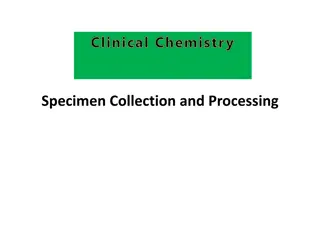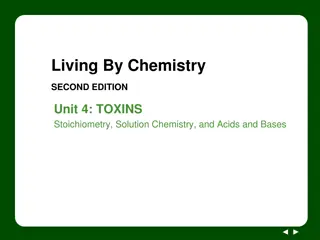
Importance of Fats in Clinical Chemistry Lecture
Explore the significance of fats in clinical chemistry, covering topics such as fat structure, sources of fats, lipid functions, triglycerides, cholesterol, and the clinical significance of cholesterol levels. Gain insights into the impact of fats on health and important metabolic processes.
Download Presentation

Please find below an Image/Link to download the presentation.
The content on the website is provided AS IS for your information and personal use only. It may not be sold, licensed, or shared on other websites without obtaining consent from the author. If you encounter any issues during the download, it is possible that the publisher has removed the file from their server.
You are allowed to download the files provided on this website for personal or commercial use, subject to the condition that they are used lawfully. All files are the property of their respective owners.
The content on the website is provided AS IS for your information and personal use only. It may not be sold, licensed, or shared on other websites without obtaining consent from the author.
E N D
Presentation Transcript
Clinical Chemistry Second year Lecture (1) By :Assistant lecturer Shahad Munther Mahmoud
Fats and its importance Fats are compound that do not dissolve in water. It is include saturated fatty acids , monosaturated fatty acids ,polyunsaturated fatty acids ,omega-3 fatty acids ,trans fatty acids , triglycerides and cholesterol Fat structure: It is include saturated fatty acids ,monosaturated fatty acids ,polyunsaturated fatty acids ,omega-3 fatty acids ,trans fatty acids , triglycerides and cholesterol The three basic kind are : saturated , monosaturated and unsaturated.
The source of fats: 90% of the total fat in the nations food supply comes from three groups of food: 1. Fats and oils 2. Meat, poultry and fish 3. Dairy of foods
Fats and oils belong to a group of biological substances called lipids. Lipids are biological chemicals that do not dissolve in water. They serve a variety of functions in organisms, such as regulatory messengers (hormones), structural components of membranes, and as energy storehouses. Fats and oils generally function in the latter capacity. Fats differ from oils only in that they are solid at room temperature, while oils are liquid. Fats and oils share a common molecular structure, which is represented by the formula below. H C O C Ra H C O C Rb H C O C Rc
Fats and oils are esters of the tri-alcohol, glycerol (or glycerin). Therefore, fats and oils are commonly called triglycerides, although a more accurate name is triacylglycerols. One of the reactions of triglycerides is hydrolysis of the ester groups.
Cholesterol: Is a steroid compound containing a storied nucleus (the ring A,B,C,D).cholesterol means bile solid alcohol . Occurrence : The largest amount is present in most brain , nerve tissue, bile , human tissue , blood and liver. Normal value: 140 280 mg/100ml Clinical signification : increased cholesterol levels cause: 1. Bile canaclculi and duets obstruction due to reduction of extraction into the intestine. 2. Nephritic syndrome 3. Diabetes mellitus 4. Atherosclerosis Decreasing cholesterol levels cause: 1. Sever hepatitis. 2. Hyperthyroidism.
Body fat percentage : Is the total weight of person fat divided by the persons weight and consists of essential body fat . Essential body fat is necessary to maintenance life and re production functions. Essential fat is 3-5% in men and 8- 12% in women . Measurement techniques: There are several techniques can be used to estimate fat percentage accurately: 1. Near infrared interaction . 2. Dual energy X-ray absorptiometry (DEXA).






















